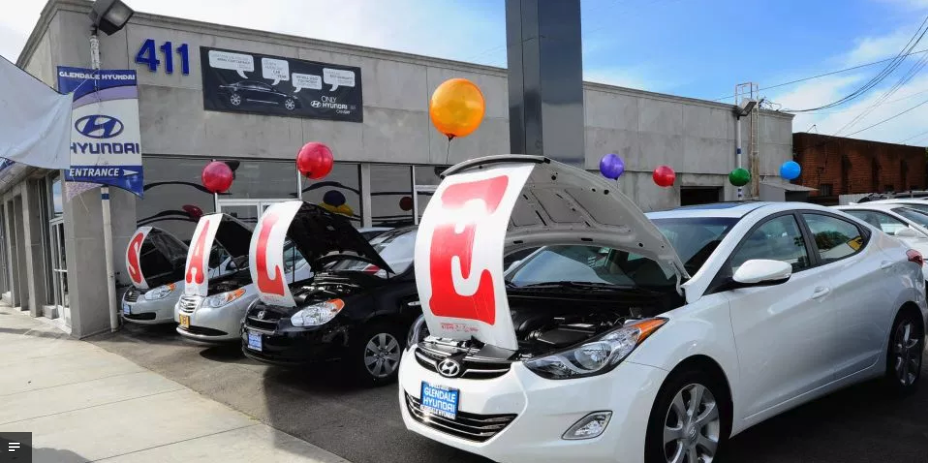Lease or loan? Breaking down how to finance your new car

Story by John LeBlanc
You’ve done your test drives. You’ve trudged through the colour charts and looked at all the options. Now comes the question: “How do I finance my next new vehicle?”
For those not fortunate enough to have the cash on hand to buy a new vehicle outright, the “lease versus loan” question is a tough one; especially because of the variety of finance terms being offered in a very competitive new vehicle market.
After the 2008 financial crisis and subsequent drop in new car sales, many automakers simply got out of the leasing business. But as a way to entice buyers in a growing and competitive new vehicle market, leasing has clawed its way back as a financing option.
That said, in general, lease rates aren’t as low as they were seven or eight years ago. And for some models and makes, residual values aren’t as high as well, resulting in larger amounts to finance. All of these changes only mean that doing your homework on the “lease versus loan” question is more important than it ever was.
You may already know that leases and loans are just two different ways of financing. One pays for the use of a vehicle; the other funds the purchase. And each has its own pros and cons.
Say you’re looking at financing a $25,000 new vehicle. When you get a loan, you have to borrow for the entire $25,000 – plus interest charges, plus sales taxes, plus administration fees – all up front. When you lease, you pay the difference in what the vehicle is worth today new and what it will be worth used at the end of the term (which is usually 36 to 48 months). If that $25,000 vehicle has an estimated resale value of $11,000 after 48 months, your lease payments only cover the $14,000 in depreciation – plus interest charges, plus sales taxes, plus administration fees.
Most automaker websites allow you to compare buying versus leasing costs with a “build” feature from the comfort of your home or work cubicle. To see how the “lease versus loan” scenario works, let’s take for example Canada’s perennial best-selling new car: the Honda Civic compact sedan.
Between the $17,323 base model DX and the top-of-the-line $28,423, I chose the mid-range $20,750 2015 Civic EX sedan; Honda’s familiar 143-horsepower, 1.8-litre four-cylinder, mated to a five-speed manual transmission, powers the Civic EX. It also comes with a bunch of standard kit — rearview backup camera, blind spot display, power moonroof and a leather-wrapped steering wheel — that makes daily driving a bit easier.
To increase my Civic EX’s resale value, I also added a $1,300 continuously variable automatic transmission as the only option. Add in a $1,665 freight and pre-delivery inspection fee, and the associated federal and provincial taxes based on my Ottawa address, and the total purchase price (notwithstanding any factory or dealer rebates or your ability to negotiate) of my virtual 2015 Civic EX sedan came to $25,325.
Now, when I click on the website’s “Build & Price” button, I’m presented with clear comparisons of my “lease versus loan” costs. If I only looked at the monthly costs, the $328.55 lease looks like a good deal compared to the $554.86 loan figure — who doesn’t want to save over $200 on their monthly budget? But when you factor in the long-term costs, the differences — or lack thereof — become more evident.
Based on putting $0 down over a 48-month term, the 2015 Civic EX lease rate is 6.83 per cent, while the loan rate is 4.0 per cent. Plus, I need to pay an upfront $371 if I lease, but nothing if I get a loan.
If I lease the Honda, I will have paid $16,141.40 after four years (if I stick to the 24,000 kilometres per year limit, or else Honda will charge me an additional $0.08/km).
If I get a loan, I will have paid $26,623.28. But – and it’s a big “but” — I will own a vehicle (that according to Honda) is worth $10,375. Factor that in, and my outlay for the loan is $16,258.28 — or the cost of a large coffee per month more than the lease.
You can spend the better part of a morning at work noodling around on any automaker’s website, playing with “lease versus loan” scenarios. But in the end, each calculation will roughly end up with similar pay-me-later leases or pay-me-now loans.
Which is why, faced with the decision to lease or loan, new vehicle buyers have to not only look beyond these financial comparisons (rates, terms, residual values, required deposits, administration fees, rebates), but also review their driving lifestyle priorities:
• Are long-term cost savings more important than lower monthly payments?
• Is having a new vehicle every two or three years with no major repairs more important than potential long-term repair costs?
• Do you like to own your vehicle, as opposed to having lower up-front costs and no down payment?
• Is the thought of having your vehicle paid off enticing, even if that means higher monthly payments for the initial few years of ownership?
In the end, leasing usually does not build equity, while buying a vehicle — and paying it off — does.
Even simpler: Leasing equals lower payments, no equity; borrowing equals higher payments, with some equity.
In either case – lease versus loan – choosing a vehicle that will retain its value after three or four years is essential, and will pay off in the long run.





![[del.icio.us]](https://www.straight-six.com/wp-content/plugins/bookmarkify/delicious.png)
![[Digg]](https://www.straight-six.com/wp-content/plugins/bookmarkify/digg.png)
![[Facebook]](https://www.straight-six.com/wp-content/plugins/bookmarkify/facebook.png)
![[Google]](https://www.straight-six.com/wp-content/plugins/bookmarkify/google.png)
![[Reddit]](https://www.straight-six.com/wp-content/plugins/bookmarkify/reddit.png)
![[StumbleUpon]](https://www.straight-six.com/wp-content/plugins/bookmarkify/stumbleupon.png)
![[Twitter]](https://www.straight-six.com/wp-content/plugins/bookmarkify/twitter.png)
![[Email]](https://www.straight-six.com/wp-content/plugins/bookmarkify/email.png)